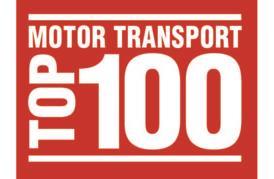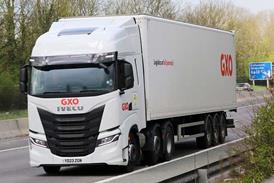
Technical problems continue to plague the MT Tracker - so I'm afraid we cannot bring you any graphs of share price performance again this week - which is a shame as the industry's performance on the stock market continues to go from strength to strength with operators hitting record highs.

| 7 August share price | 14 August share price | |
| Dart Group | 264 | 267.5 |
| Hargreaves Services | 802.5 | 829 |
| NWF Group | 120 | 121.5 |
| Stobart Group | 100 | 106.75 |
| UK Mail | 590 | 624 |
| Wincanton | 78 | 80 |
| Total (Pence) | 1954.5 | 2028.75 |
This week our basket of shares is worth 2028.75 pence - as the table above shows. Shares in five of the six companies we track in this sector haven't been this high all year - and that includes Fowler Welch parent Dart Group; NWF Group (despite its warning on Boughey Distribution last week); Stobart Group; UK Mail and Wincanton. The market cap's below aren't too shabby either.
| 7 August market cap | 14 August market cap | |
| Dart Group | 382.8 | 388.24 |
| Hargreaves Services | 264.83 | 273.57 |
| NWF Group | 56.4 | 57.11 |
| Stobart Group | 348 | 371.49 |
| UK Mail | 324.5 | 343.2 |
| Wincanton | 95.16 | 97.6 |
| Total (£m) | 1471.69 | 1531.21 |
There is a fair amount of optimism for economic performance across the board. GDP in the UK in the second quarter of the year rose by 0.6% according to Eurostat; compared to growth of 0.5% in France and 0.7% in Germany. Across all EU member nations it rose 0.3% as the likes of the Netherlands (-0.2%) , Italy (-0.1%) and Spain (-0.1%) struggle. Still numbers like these will give the markets a spur.
If this gives you the impetus to seek further funding - this article (written by David Craik) appeared in Motor Transport in print on Monday gives some useful pointers.
So you want to go public? David Craig takes a closer look on behalf of Motor Transport

Last month French logistics giant Norbert Dentressangle (ND) listed on the NYSE Euronext London. ND, which has been listed on NYSE Euronext Paris since 1994, said the move would help it diversify its shareholder base, access the pool of London-based institutional investors and position the group as a leading international logistics and freight forwarding firm.
Chief executive officer Hervé Montjotin (pictured right) said: “The move also reflected the strong contribution of our UK-based businesses to our group growth story as we get ready for the next phase of our European and international expansion plan.”
ND joined a select band of UK transport firms that have gone public including: Stobart Group; Wincanton, which listed in 2001 and is now part of the ICAP Securities and Derivatives Exchange (ISDX); UK Mail, which listed on the London Stock Exchange in 1993; and Interbulk, which listed on AIM, the London Stock Exchange’s market for smaller com-panies, in 2007.
Time to transform
This could be a good time to assess why a transport firm should transform itself from a private into a public company. Why make the move and what is the process? How can you tell whether your firm meets the right criteria? Is such a move the preserve of a select few or is it a viable option for all?
For ND, it seems its move was based on two key factors – getting the firm’s name better known and accessing new funds to drive growth.
“The UK investment community has a great deal of experience in the transport, logistics and supply chain sectors and a good understanding of the key success factors for companies in our highly competitive marketplace,” Montjotin said. “Our listing will raise the profile of Norbert with this important group of investors.”
Stobart Group was listed on the London Stock Exchange in 2007 following a £138m reverse merger with Westbury Property Fund to help it develop its intermodal strategy. The group described the deal as a “metamorphosis”, calling on its lorry-spotting fans to invest and own part of the firm.
International strategy

Vivienne Cassley, primary markets sales manager at ISDX, said that companies coming to market are looking for their next stage of growth. “We are focused on entrepreneurial growth companies and helping to fill the equity gap roughly between £150,000 and £5m, which is often a barrier to growth. They can raise this money when they list or any time when they are listed. Being a public company gives them a greater status and is helpful when they are tendering for contracts or looking for new suppliers.
“It can also help if they want to set up a stock option plan for employees or allow them to have an independent valuation if they are looking for a trade sale years down the line.”
ISDX focuses on smaller companies ranging from a market value of £500,000 to about £7m. “Investors are looking for well-managed businesses with a strong business plan and growth potential. But they also need to feel confident that they will be able to buy and sell shares without too much difficulty. This means that, ideally, companies can’t be too small and will need to put a reasonable number of shares into public hands. It’s a balancing act,” she said.
“We don’t want companies to list and be disappointed. We try and match them with investor criteria. We also want firms to be open and honest with us. We want to know their history.”
Companies looking to list must also appoint and retain an ICAP corporate adviser at all times, demonstrate appropriate levels of corporate governance including having at least one independent non-executive director, have published audited financial reports no more than nine months before the date of admission to trading and have at least 12 months working capital. They must also have no restrictions on the transferability of shares and publish an admission document outlining company strategy, accounts and history of the directors.
Admission process

The adviser is the first port of call for information and will help with this admission process – a broker will help raise the cash. A typical timeframe for admission is between three and six months, with costs including fees to the adviser, broker and lawyers who check the admission document and application fees to ISDX typically between £100,000 and £150,000.
Listed firms also have to pay annual fees to ISDX of about £6,500 and retention fees for advisers. They must also comply with various regulations such as publishing regular accounts, declaring price-sensitive information and directors’ deals to the market without delay and keeping an up-to-date website. Failure can lead to fines or the cancellation of their listing.
Companies must also keep in communication with shareholders such as through annual general meetings. “Being listed is like launching a new product. You have to commit the time to make it work,” Cassley said.
Interested firms should be aware that different entrance criteria apply to the other markets but, in general, they are similar.
A spokesman for Allenby Capital, an adviser and broker for firms on or looking to list on AIM, said the first step for interested firms is to talk to people in companies that have already joined the market. “The process can be quite a learning curve. Get the benefits of other people’s experience,” he said.
“Also, create a team that focuses on the AIM process so it does not interfere with other aspects of your business. As for an adviser, find one that you get on with as you will be working with them a lot.”
Hard work
Being a public company in the investor and media spotlight can be hard and expensive work and does not suit everyone. In the first five months of this year, 35 firms delisted from AIM. But for the next Stobart or Wincanton out there, it could be a golden way to meet their aspirations.













